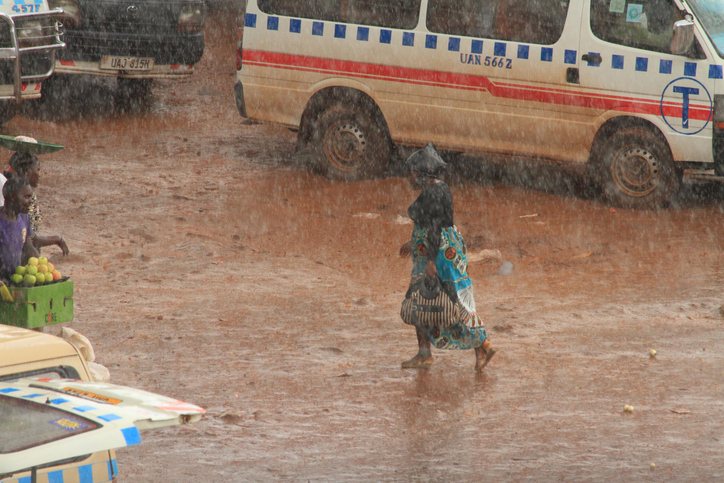How can coastal cities respond to the threat of extreme weather events due to climate change? This column outlines the vulnerability, exposure and challenges in communities of farmers and fishers in the Indian city region of Jamnagar. The adaptive capacity of the inhabitants is far from adequate, and action is urgently needed at the local, state and national levels.
Developing countries are highly vulnerable to climate change: they have less coping capacity to deal with its negative impacts. In South Asia, India is one of the most vulnerable countries, urgently requiring adaptation and mitigation measures to cope with the potential effects of extreme weather events due to climate change.
India’s coastal cities are at comparatively greater risk as their total population is likely to grow rapidly, possibly reaching 500 million over the next 50 years. The assessment of climate change impacts and adaptability both at the macro and micro levels is necessary to create effective mitigation policies.
According to the India Disaster Knowledge Network, 12% of the total land mass of India is prone to flooding, and 68% of arable land is vulnerable to drought. The climate variability along India’s coast and resultant sea-level rise will eventually have a tremendous socio-economic impact on local communities and their livelihoods.
Risks in Indian coastal cities are associated more with intrinsic vulnerability rather than external exposure to hazards. These areas are also experiencing rapid population growth and are likely to face greater climate change challenges.

The case of the city region of Jamnagar on the Gujarat coast in the Gulf of Kutch illustrates the vulnerability, exposure and perceived challenges of climate change in coastal communities of farmers and fishers at both the household and community level.
The analysis of climate variables reveals an increasing trend in the annual mean temperature observed for a period of 40 years between 1969 and 2009 in Jamnagar. The average yearly rainfall does not conform to the declining trends. But there has been a declining trend in the number of rainy days per year over the 50-year period between 1955 and 2004.
This has resulted in the greater occurrence of droughts and floods in the region, leading to loss of life and property. The inhabitants of Jamnagar face challenges such as scarcity of drinking water supply, salinity ingress from the ocean, frequent flooding in the low-lying areas (particularly slums) and high incidence of natural and man-made hazards.

The inhabitants have these local priorities to tackle as far as urban planning is concerned, while national and state level climate change priorities are concerned with the reduction of greenhouse gases and creating a new energy policy.

Perceived vulnerability, risk and coping mechanisms
Our survey of 100 households in each of two coastal communities – one engaged in agriculture and one in fishing activities – reveals that both are highly exposed to the effects of climate change and are more sensitive to extreme weather events, such as droughts, floods, cyclones and salinity ingress. But they have poor awareness of climate change impacts.
The households in the agricultural community report a change in their crop calendar due to the shifting nature of the cropping season. This has resulted in reducing the desired yields of major crops. The fishing communities report decreasing trends in their fish catch throughout the year compared with a decade ago.
A comparative assessment of the two communities shows that the fishing community is more vulnerable compared with the agricultural community due to lack of awareness, the absence of social networks, use of low technology, lower socio-economic status and greater dependency on coastal and marine resources for their livelihood.
Conclusion
The city region of Jamnagar, located in a coastal area, is vulnerable to climate change. Its exposure and sensitivity to climate change variability have increased during the past 50 years. Climate variables in terms of rising temperatures and reduction in the number of rainy days have resulted in greater exposure and sensitivity to the effects of climate change.
The adaptive capacity of the inhabitants is far from adequate, due to lack of awareness and general negligence about climate change. Community level vulnerability of those engaged in fishing and agricultural activities reveal higher exposure and sensitivity toward climate change variables, while their adaptive capacity is poor. It is evident that the fishing community is comparatively more vulnerable to climate change.
A study in Thailand illustrates government policies designed to mitigate climate change challenges faced by farmers. But it may take some time for the farmers to adapt to these new agriculture practices.
The policy implications are clear. Local development priorities need to be considered while determining national and state level measures to mitigate the effects of climate change. It works better when local communities are involved in climate change adaptation and mitigation measures.








Wonderful article by Dr Anil
Wonderful article by Dr Anil Roy. It is very informative and worth emulating by authorities.
It is a well researched
It is a well researched article and informative in terms of the findings. The title, however, is a little misleading as the article focuses on the impact of climate change on peri-urban communities and not on the urban communities of Jamnagar city. The fishing folk of India’s coastal cities are quite adept in use of smartphones and numerous apps to access weather forecasts, market information, availability of catch, etc as compared to their counterparts in rural hinterlands. Fishermen of Cochi in Kerala are trendsetters in using technology to optimise catch and minimise weather related risks.
In comparison, the poor and underprivileged particularly the migrant labour living in the coastal cities are much more vulnerable in terms of provision of safe drinking water, habitat and loss of livelihood due to vagaries of weather induced by climate change. Population density and externalities exacerbate the impacts on urban communities, necessitating suitable interventions from authorities to mitigate these. Public policy and preparedness therefore need to be different for the coastal cities as compared to the surrounding hinterland, a fact which perhaps merits mention in the article. The Thailand example also needs elaboration than having a passing reference in the article.
Dear Sandeep, thank you for
Dear Sandeep, thank you for your comment and for starting an interesting discussion on the topic. As you might know, GlobalDev just launched a contest inviting researchers, academics, students, decision makers and practitioners from all over the globe to comment, give feedback and start a discussion on any of our GlobalDev’s articles. If you would like us to consider your comment in the contest, please note that following GlobalDev on Social Media is a prerequisite for participating. Make sure you are following our Facebook page, Twitter and/or our LinkedIn group. Please also send us your email address (editors.globaldevblog@gdn.int) so we contact you if you win! Good luck and please keep on reading, commenting and giving feedback on our articles!